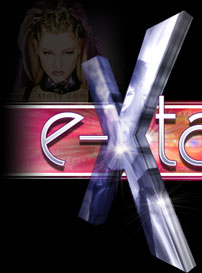










 |
     |
|
|
|
|
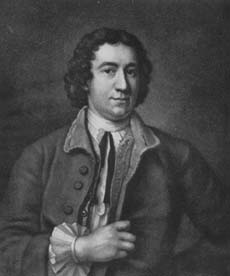 The year is 1759. The full moon’s reflection is scattered in the gondola ‘s wake, as it. slides silently along the Thames. Inside the craft, you shiver and pull the nun’s habit tighter around your naked body and look around, trying in vain to recognise the shadowed faces of the other occupants of the boat. You know that some of the other nuns in the boat are your sisters from the brothel, but the gravity of the occasion prevents any signs of recognition. The boat arrives at the landing, and you step onto dry land and look up in awe at the crumbling abbey silhouetted against the night sky. Abandoned for centuries, Medmenham Abbey has now passed onto the Friars of St Francis, whose worship is as fervent as ever, though their master goes by another name. The year is 1759. The full moon’s reflection is scattered in the gondola ‘s wake, as it. slides silently along the Thames. Inside the craft, you shiver and pull the nun’s habit tighter around your naked body and look around, trying in vain to recognise the shadowed faces of the other occupants of the boat. You know that some of the other nuns in the boat are your sisters from the brothel, but the gravity of the occasion prevents any signs of recognition. The boat arrives at the landing, and you step onto dry land and look up in awe at the crumbling abbey silhouetted against the night sky. Abandoned for centuries, Medmenham Abbey has now passed onto the Friars of St Francis, whose worship is as fervent as ever, though their master goes by another name.
A solemn procession of monks carrying lighted tapers lead through the elm trees to the abbey’s entrance as funeral bells ring from the tower and the mournful notes of the concealed organ filter out into the night. In the elaborate grounds of the abbey, the garden of lust, you notice obscene statues of pagan gods cavorting in the moonlight. At the entrance to the abbey, flanked by monstrous statues gesturing silence, stands a man in a white robe wearing a cardinal’s hat who cries out “What is the password ?” The monks respond together: “Do what thou wilt.” In the clipped tones of the monks’ voices you recognise the lilt of aristocracy, the touch of greatness. Led, inside, you enter a room lit by candles behind red stained-glass, giving the room a fiery glow. Half-human, half-animal statues leer from shadowy alcoves, and pornographic and blasphemous frescoes litter the walls. |
| A hooded servant hands you a drink in a phallic goblet as the monks shuffle out of the room into the chapel. The drink is bitter; brandy laced with brimstone. A tight mask is fastened around your features. From inside the chapel you hear bizarre chants and cries; it sounds vaguely religious, but you know that the sounds you hear are intended to summon the Dark One. |
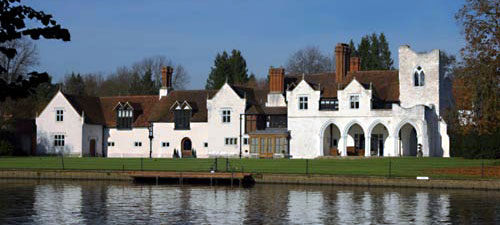 |
| When the monks return, they seem even more imposing, charged with the powers of darkness. The blood-red wine of the black mass stains their lips. You and your fellow nuns are lined up, and the monks choose, one by one. You are led to a green damask couch by the wall by one of the men, who hastily removes your habit, leaving you naked, bar your mask. He whispers strange hypnotic words in your ears, (which you recognise as Latin), and traces complex sigils into your flesh. Your long night has just begun. |
| Such is the initiation of a young prostitute, into what became known as the Hellfire Club. Its founder, Sir Francis Dashwood, became notorious for his dissolute way of life, rivalling all others in his excess of depravity in a century renowned for its licentiousness. It was fashionable at the time for a powdered-and-curled young gentleman to be as promiscuous and alcoholic as possible - to have seduced a girl of twelve, or murdered a common man was seen as a mark of status. |
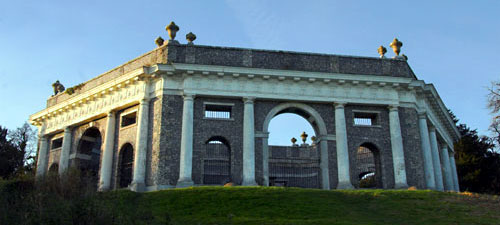 |
| Dashwood seemed to have founded the Hellfire Club as a reaction to his disillusionment with religion. After committing drunken blasphemy in Italian churches, he was said to have seen a holy vision, which immediately converted him to a committed Christian. Unfortunately, by witness of his travelling companion the ‘vision’ had simply been the sight of two cats mating, which, in his sleepy drunkenness he had mistaken for the devil calling him to Hell. On returning to England, Sir Francis shocked his rake friends by professing his faith and dedicating his life to good deeds. However, once the truth of his conversion came out he became a laughing-stock; after that he was determined to dedicate his life to mocking religious thought, which led to his founding of the Hellfire Club. |
| Originally held in the back room of the George and Vulture Inn in London(which still exists) and later moving to the ruins of Medmenham Abbey on the Thames, the Hellfire Club attracted some of the most influential and rich men of the day. There was Lord Sandwich, who was ‘mischievous as a monkey and lecherous as a goat’, given to the corruption of youthful innocence and an affinado of flagellation, (and incidentally responsible for the popularisation of sandwiches.). Another was Lord Bute, an avid campaigner against any kind of reform or amelioration of the poor’s hideous conditions, and through his actions, indirectly responsible for the American revolution. They were part of a group known as the ‘King’s Friends’, who effectively pulled the strings behind the throne of George II and George III, influencing government policy. Other members included Paul Whitehead, a troubadour of blasphemy, Charles Churchill, a corrupt priest, Lord Melcombe, George Selwyn, a satanist and necrophilist, Lawrence Sterne and the Chevalier d ‘Eon, a committed transsexual. The artist William Hogarth is said to have taken inspiration for his ‘Rake’s Progress’ from the antics of the Hellfire Club, whilst Benjamin Franklin, one of the. instigators of the new America, was also said to have visited Dashwood. |
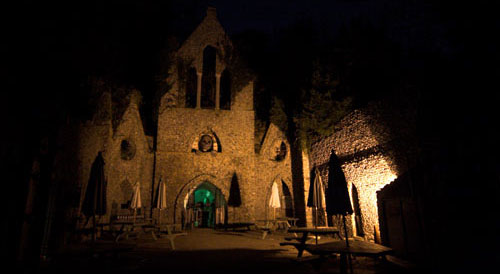 |
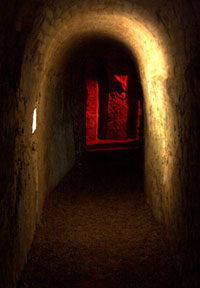 The parties at the abbey must have been remarkable spectacles. Dashwood was a prolific art collector, and the abbey reflected his tastes. Fake statues and artificial caves littered the grounds, whilst inside there were a substantial collection of Greek and Turk objects d‘art. The Black Mass performed by the monks in the chapel was as much a part of the evening as the events that followed. Modelled loosely on the Roman Catholic mass, it was celebrated on the body of a naked woman laid out on the altar, the congregation drinking sacrificial wine from her navel whilst burning black candles and singing satanic perversions of popular hymns. A lamp in the shape of a giant bat with an erect penis, and inverted crucifixes decorated the black-draped chapel, whilst the narcotic scents of belladonna, hemlock, henbane, verbena and mandrake drifted in the air. The purpose of the Black Mass was to invoke the presence of the Devil, but it is doubtful that they ever succeeded - the mocking of the church was staged more to give the members confidence and bravado, rather than seriously satanic intentions. Once however, John Wilkes, the famous political reformer and darling of the masses, played a trick on the club which later led to his expulsion. He dressed a baboon in a devil‘s suit hid it in a chest by the altar. At the dramatic height of the ceremony, Wilkes secretly released the animal, leading to immediate terror and hysteria amongst the monks. Although well-known for their love of practical jokes, the club members did not find Wilkes’ antics very funny, and expelled him from the club. The parties at the abbey must have been remarkable spectacles. Dashwood was a prolific art collector, and the abbey reflected his tastes. Fake statues and artificial caves littered the grounds, whilst inside there were a substantial collection of Greek and Turk objects d‘art. The Black Mass performed by the monks in the chapel was as much a part of the evening as the events that followed. Modelled loosely on the Roman Catholic mass, it was celebrated on the body of a naked woman laid out on the altar, the congregation drinking sacrificial wine from her navel whilst burning black candles and singing satanic perversions of popular hymns. A lamp in the shape of a giant bat with an erect penis, and inverted crucifixes decorated the black-draped chapel, whilst the narcotic scents of belladonna, hemlock, henbane, verbena and mandrake drifted in the air. The purpose of the Black Mass was to invoke the presence of the Devil, but it is doubtful that they ever succeeded - the mocking of the church was staged more to give the members confidence and bravado, rather than seriously satanic intentions. Once however, John Wilkes, the famous political reformer and darling of the masses, played a trick on the club which later led to his expulsion. He dressed a baboon in a devil‘s suit hid it in a chest by the altar. At the dramatic height of the ceremony, Wilkes secretly released the animal, leading to immediate terror and hysteria amongst the monks. Although well-known for their love of practical jokes, the club members did not find Wilkes’ antics very funny, and expelled him from the club.
Following the Back Mass, the monks would return to the ‘Roman Room’, where the nuns were waiting in line for them. The nuns wore masks not only to make them devoid of personality, but also to protect their identity, as some of the nuns were fashionable society ladies in search of forbidden pleasures, whose reputation might have been ruined if they were found out. Also many of the monks did not wish to acknowledge that they might be having sex with their sisters, daughters or even mothers that they had brought along with them, incest being a fashionable sin at the time. However, most of the women were hired prostitutes, obtained by madams scouring London in service of the club. Virgins were in particular demand and there were no limits to their availability, since there was a great influx of poor rural women coming into London in seek of work at that time; they easily fell into the financial traps that the madams set for them. |
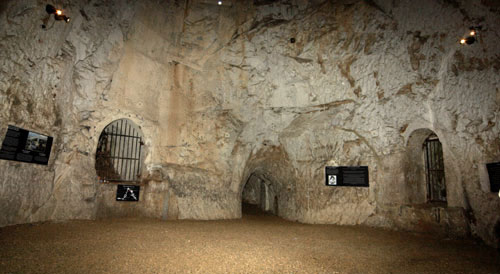 |
| After choosing their women, the monks were able to retire to small cells off the main room, but many however chose to stay out on the couches placed around the edge of the room. They encouraged each other and derived the most pleasure from exhibitionism and voyeurism. Increasing their sexual status amongst the others was of prime importance. Aphrodisiacs were always on hand, and there was a variety of sexual apparatus available including ‘musical bells’, ‘night caps’ and ‘blessers’. One device provided for the women was the Idolum Tentiginis or ‘lustful toy’, which was a rooster-shaped hobby-horse with a phallic beak, with its head turned up along its back, which the women were able to ride. Also, the Karma Sutra had just become available, and the young gentlemen boasted of their knowledge of its 365 sexual positions. |
| At some time in the evening, ‘exquisite and gargantuan’ banquets were held. The table was spread with damask, and glistened under candelabra, covered with the gleam of silver and fine cut glass. Dishes such as the ‘breasts of venus’ and ‘Devil’s loins’ were served along with huge amounts of wine and cocktails such as ‘Strip Me Naked’, ‘Lay Me Down Softly’ and ‘Gin and Sin’. |
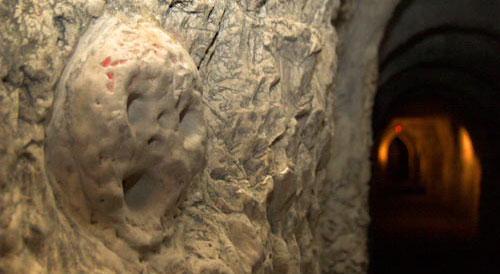 |
| The club became infamous throughout Europe, not only because of what went on behind the abbey walls, but also because of the highly respectable and powerful people alleged to be members, royalty included. However the publication of ‘Chrysal’ by Charles Johnson was the first widely-available account of what was supposed to have gone on at the abbey. After this inaccurate and second-hand account was published, Medmenham attracted tourists and curiosity-seekers, so Dashwood was forced to move the location of the Hellfire Club to his estate at West Wycombe. |
| Despite having a mansion-house designed by the greatest architects of the period, Sir Francis realised that in order to keep the same atmosphere that had been all-important at the abbey, something extra special had to be built. This led to a network of caves being dug in the hills to the north of West Wycombe, laid out in a sexual design, which still exist. The cave entrance is hidden by a group of tall yews (associated with death) and is composed of flint triangles and pyramids set into the chalk rock. After an iron gate, a passageway carved with devils’ faces leads into a bewildering system of catacombs, followed by the great banqueting hall, which is the largest man-made chamber ever to be carved into chalk. Leading off the hall are a number of private cells large enough to hold a bed. Beyond the Banqueting Hall, there are passageways in the shape of a triangle, (a sexually-significant pattern), which lead to an underground river which the monks called The Styx, and had to cross in boats. On the water’s edge stood the ‘cursing well’, which was filled with ‘unholy water’. Once inside the Inner Temple the monks, (now clad in deep red robes instead of white), performed their Black Mass and sacrificed the virginity of young girls. Here in privacy, Dashwood and his associates continued their practices into old age. |
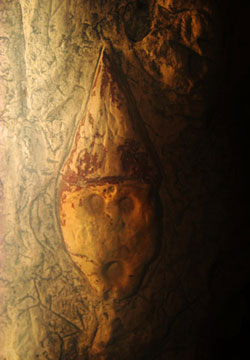 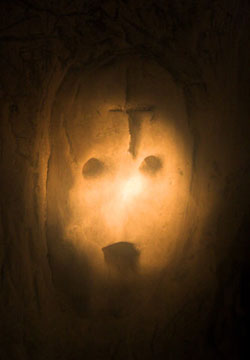 |
| Perhaps incongruously, Dashwood built a church on his estate and collaborated with Benjamin Franklin on the writing of a prayer-book, so maybe Sir Francis was not as against religion as has often been presented. Perhaps he simply preferred to be cast as the rebel against the ruling order as embodied in the Church, rather.than being a committed Satanist. As all the records of the club’s meetings were destroyed by the club’s secretary upon his death, it is difficult to ascertain the exact nature of many of the club’s practices. Historians have also played-down the club’s interests in order to not offend the living relatives of club members still in positions of power. All that remain are the legends of the sexual exploits of the trusted men in the highest seats of power, a subject which we will never tire to hear about. |
|
|
|
